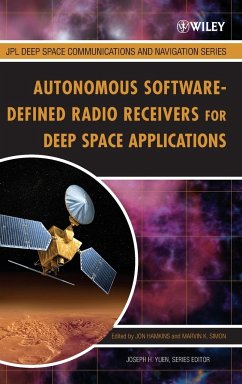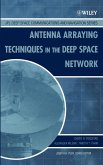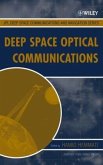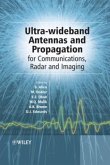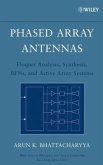This book treats the design and development of algorithms that allow successful autonomous operation of a software defined radio (SDR) system. Unlike a software radio that is simply reconfigurable, this book treats the problem of autonomously reconfiguring a radio to receive whatever type of signal happens to come in.
Full coverage of the techniques needed to implement an autonomous software-defined radio system
This book introduces the reader to the concept of an autonomous software-defined radio (SDR) receiver, which automatically recognizes attributes of an incoming signal and reconfigures itself to receive it. This is in contrast to conventional software-defined radios, which are reconfigurable but not autonomous.
The book explores the challenges of such automatic reconfiguration, and explains the design and development of algorithms that permit its successful operation. Among the topics covered are automatic identification of the carrier frequency, modulation index, data rate, modulation type, and pulse shape, based on observations of the received signal.
Each distinct aspect of the design of the receiver is treated in a separate chapter written by one or more leading innovators in the field. Chapters begin with a problem statement and then offer a full mathematical derivation of an appropriate solution, a decision metric or loop-structure as appropriate, and performance results.
Two of the chapters serve specifically to pull all the individual elements together and help readers see how a successful autonomous SDR receiver works:
_ Chapter 2, The Electra Radio, provides a detailed review of NASA's Electra radio, which was developed for deep space applications
_ Chapter 11, Implementation and Interaction of Estimators and Classifiers, the final chapter, demonstrates the performance of an actual software implementation of the various algorithms working in concert with each other
In summary, all the materials and techniques that an engineer needs to implement an autonomous SDR are included. Although the technology is intended for deep space applications, the theoretical development and algorithms presented in this text can be applied to any terrestrial radio with the capability of processing more than one type of signal.
Full coverage of the techniques needed to implement an autonomous software-defined radio system
This book introduces the reader to the concept of an autonomous software-defined radio (SDR) receiver, which automatically recognizes attributes of an incoming signal and reconfigures itself to receive it. This is in contrast to conventional software-defined radios, which are reconfigurable but not autonomous.
The book explores the challenges of such automatic reconfiguration, and explains the design and development of algorithms that permit its successful operation. Among the topics covered are automatic identification of the carrier frequency, modulation index, data rate, modulation type, and pulse shape, based on observations of the received signal.
Each distinct aspect of the design of the receiver is treated in a separate chapter written by one or more leading innovators in the field. Chapters begin with a problem statement and then offer a full mathematical derivation of an appropriate solution, a decision metric or loop-structure as appropriate, and performance results.
Two of the chapters serve specifically to pull all the individual elements together and help readers see how a successful autonomous SDR receiver works:
_ Chapter 2, The Electra Radio, provides a detailed review of NASA's Electra radio, which was developed for deep space applications
_ Chapter 11, Implementation and Interaction of Estimators and Classifiers, the final chapter, demonstrates the performance of an actual software implementation of the various algorithms working in concert with each other
In summary, all the materials and techniques that an engineer needs to implement an autonomous SDR are included. Although the technology is intended for deep space applications, the theoretical development and algorithms presented in this text can be applied to any terrestrial radio with the capability of processing more than one type of signal.

